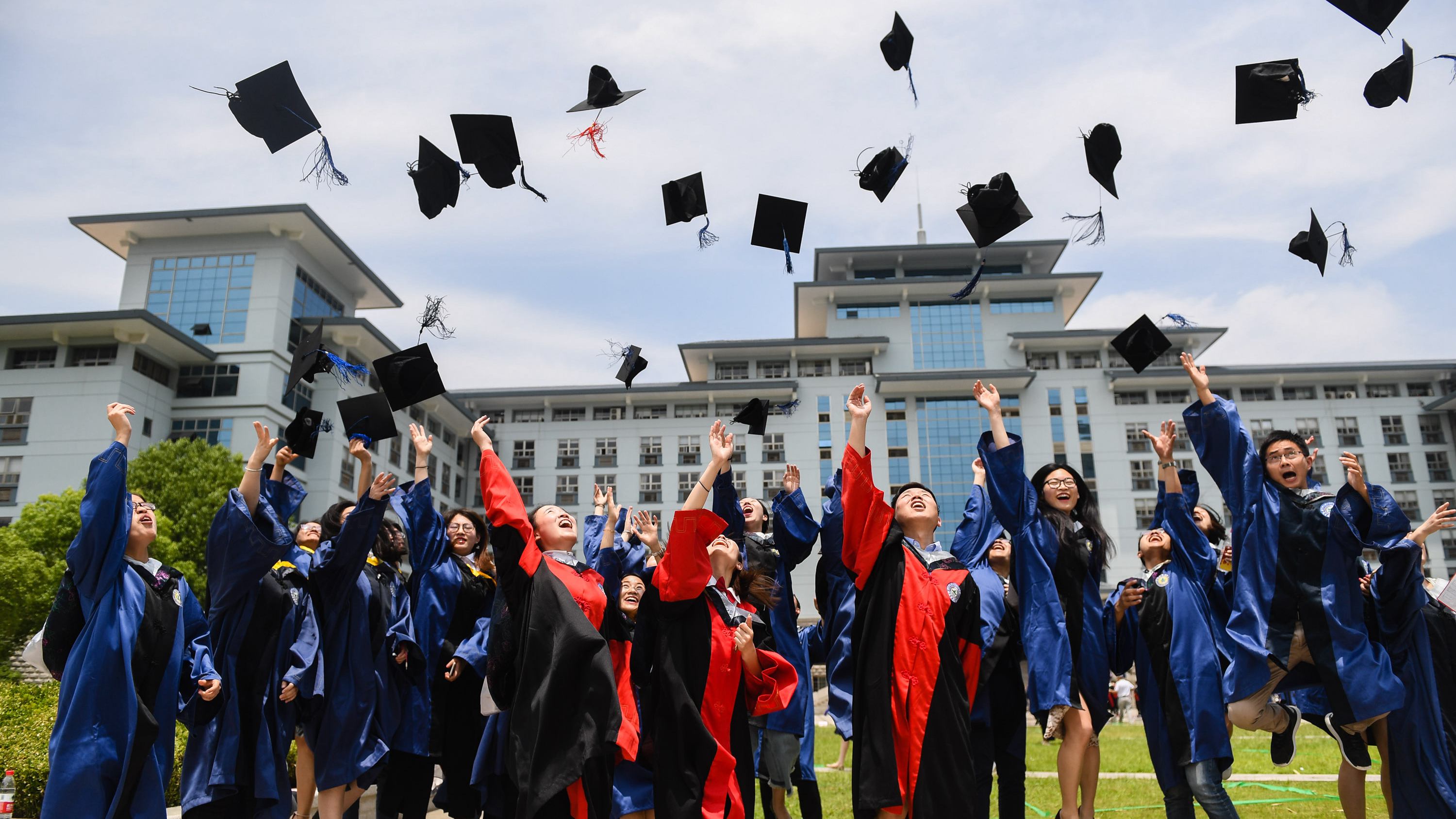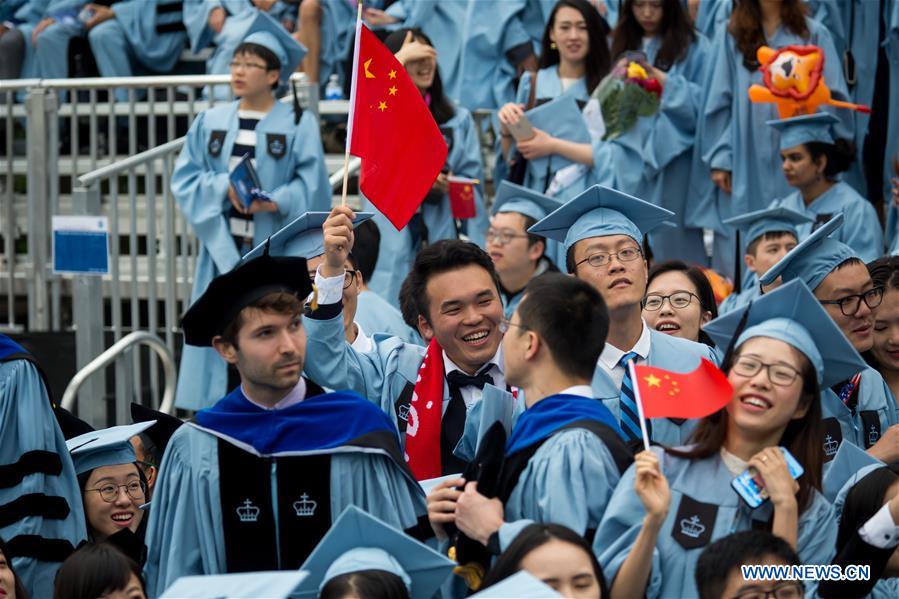
Graduating doctorate and master's students toss their academic caps into the sky as they pose for photos at Nanjing Agricultural University in Nanjing, east China's Jiangsu Province, June 21, 2018. /Xinhua
Graduating doctorate and master's students toss their academic caps into the sky as they pose for photos at Nanjing Agricultural University in Nanjing, east China's Jiangsu Province, June 21, 2018. /Xinhua
Editor's note: Wang Huiyao is the president of the Center for China and Globalization (CCG). The article reflects the author's opinions and not necessarily the views of CGTN.
A central conference on talent-related work was held in Beijing from September 27 to 28. Chinese President Xi Jinping addressed the conference and clarified the guidelines, objectives, key tasks, and policy initiatives of talent work in the new era, which opens a new chapter for China's talent development.
As the world is experiencing great changes, the only way for such adaptation is to further deepen reform and expand openness. In this new development stage, it is important to accelerate the building of a global talent and innovation center to boost China's development.
Talent is an important aspect of national strength. China's human capital structure is shifting from being based on quantity to talent and quality.
I participated in the drafting of the National Medium and Long-term Talent Development Plan (2010-2020), which was the first medium and long-term talent development plan promulgated in 2010. In the past decade, China's talent development has continued to make progress.
According to the State Council and the Ministry of Education, China's skilled workers in 2020 exceeded 200 million people, and over 50 million of them were highly skilled. In 2020, the total number of students enrolled in various types of higher education in China was 41.83 million.
Talent innovation is aligned with China's rapid development. China has gradually become a fertile ground for global talent innovation and entrepreneurship. From 1978 to 2019, the total number of students studying abroad reached over 6.5 million, and some 4.2 million have chosen to return to China after their studies, accounting for 86.28 percent of the group that has completed their studies.
According to the Global Innovation Index Ranking 2020, China's ranking has risen rapidly to 14th in the world from 29th in 2015. The total number of R&D personnel in China has ranked first in the world for eight consecutive years. The number of international patent applications has ranked first in the world with more than 68,000 articles.
A solid foundation of personnel is the key to achieving the country's long-term goals of realizing modernization by 2035 and making China a great modern socialist country in every dimension by 2050.
President Xi noted the need to broadly attract talent from around the globe, and there are two ways to achieve the goal.
First, we should welcome more Chinese returnees to contribute to the motherland.
Chinese students who study abroad receive an international, high-quality education, develop a global vision and enhance their international competitiveness. This experience makes those students more familiar with global rules and enhances their global networks, cross-cultural adaptability, and language skills, making them well suited to the needs of our modern globalized economy.

Graduates wave Chinese national flags during the commencement ceremony at Columbia University in New York, U.S., May 16, 2018. /Xinhua
Graduates wave Chinese national flags during the commencement ceremony at Columbia University in New York, U.S., May 16, 2018. /Xinhua
Amidst China's ongoing integration into the global economy and growing role in global governance, the students can also contribute to China's participation in multilateral fora, helping Chinese enterprises to "go abroad" and multinational enterprises to invest in China.
Secondly, China is keen to attract more international talent to China. President Xi's words show that high quality international talents are welcome to come to China for innovation and development. There are various measures to achieve this aim.
The launch of the green card for high-level talents has greatly facilitated the introduction of foreign high-level talents from all over the world. Besides, the introduction of market-based recognition criteria for permanent residence applications, which was first piloted in Shanghai, has proven successful.
Furthermore, the threshold of permanent residence application has been lowered for overseas Chinese. The national policy of allowing Chinese doctors to apply for permanent residence directly provides a strong policy incentive to attract more high-quality talent to China.
Last but not least, foreign students with a bachelor's degree or above are allowed to start their own business in China directly after graduation. This conditional relaxation of requirements can strengthen the reserve of high-quality young talents, overcome the disconnection between foreign students' training and talent retention, and form a strong support for the introduction of international talents needed for development.
Beijing, Shanghai, Guangdong, Hong Kong, Macao and the Greater Bay Area can be more innovative in the reform of the talent system and mechanism. The experience gained from this region in talent development can be replicated in more cities to accelerate the building of a global talent center and innovation hub. In addition, more internationally competitive policies can be introduced to improve the professional ability of talent management and service.
During the past four decades, the talent pool has assisted the world access to China and also helped China go global. In the next four decades, global talent is well placed to help the world understand China, and vice versa.
(If you want to contribute and have specific expertise, please contact us at opinions@cgtn.com.)

